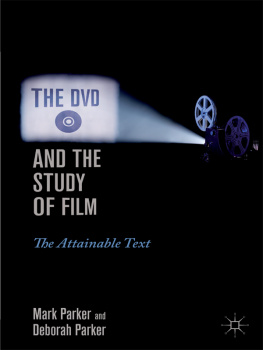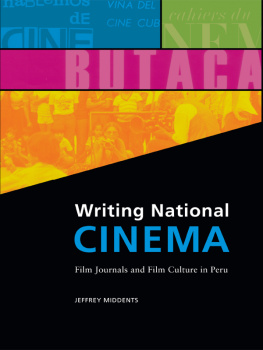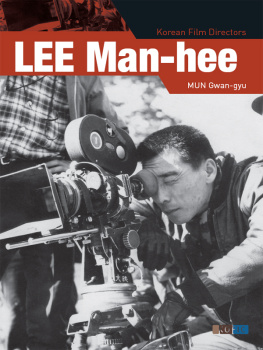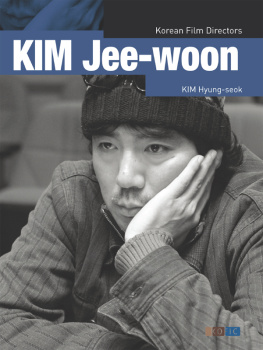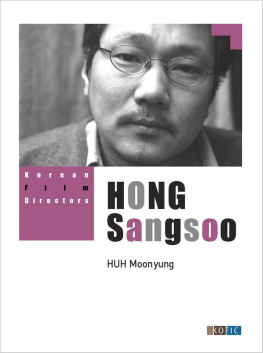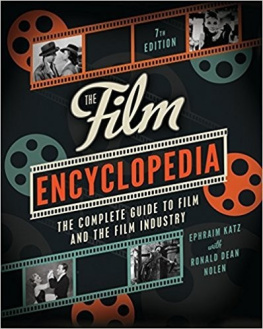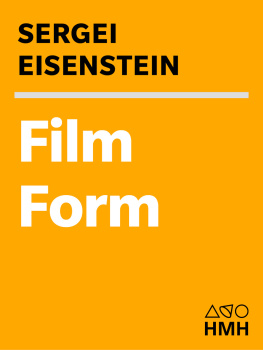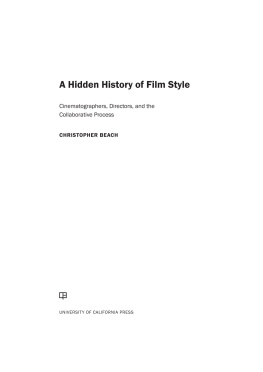The DVD and the Study of Film
The DVD and the Study of Film
The Attainable Text
Mark Parker and Deborah Parker


THE DVD AND THE STUDY OF FILM
Copyright Mark Parker and Deborah Parker, 2011.
All rights reserved.
First published in 2011 by
PALGRAVE MACMILLAN
in the United Statesa division of St. Martins Press LLC,
175 Fifth Avenue, New York, NY 10010.
Where this book is distributed in the UK, Europe and the rest of the world, this is by Palgrave Macmillan, a division of Macmillan Publishers Limited, registered in England, company number 785998, of Houndmills, Basingstoke, Hampshire RG21 6XS.
Palgrave Macmillan is the global academic imprint of the above companies and has companies and representatives throughout the world.
Palgrave and Macmillan are registered trademarks in the United States, the United Kingdom, Europe and other countries.
ISBN: 9780230110441
Library of Congress Cataloging-in-Publication Data
Parker, Mark, 1956
The DVD and the study of film : the attainable text / Mark Parker, Deborah Parker.
p. cm.
Includes bibliographical references.
ISBN 9780230110441 (hardback)
1. Motion picturesDVD special features. I. Parker, Deborah, 1954II. Title.
PN1995.9.S6695P37 2011
791.433dc22
2010045860
A catalogue record of the book is available from the British Library.
Design by Newgen Imaging Systems (P) Ltd., Chennai, India.
First edition: May 2011
10 9 8 7 6 5 4 3 2 1
Printed in the United States of America.
Preface
In a 1976 article in Screen, Raymond Bellour framed a suggestive discussion of the ontology of film with a thought experiment. Critics and scholars tend to recall the middle section of this essay, which uses Roland Barthess distinction between work and text to set the particular modality of film against those of literature, painting, music, and theater. But this theoretical argument, with its gemlike and sharply defined facets, has a setting worth our attention as well. Bellour begins The Unattainable Text with a brief evocation of the basic difficulties of film study in 1976: the relative lack of access to the object of the studythe material film itselfor at least to the proper conditions for such study, which Bellour stipulates as the editing table or the projector with freeze-frame facility.
Bellours thought experiment (possibly fired by recording technologies already on the horizon) imagines a new, fantastic availability of film:
One day, at the price of a few changes, the film will find something that is hard to express, a status analogous to that of the book or rather that of the gramophone record with respect to the concert. If film studies are still done then, they will undoubtedly be more numerous, more imaginative, more accurate and above all more enjoyable than the ones we carry out in fear and trembling, threatened continually with dispossession of the object. (19)
The possibility of this plenitude, which might put film study on a par with other scholarly efforts, leads Bellour to his theoretical argument, with its suggestive opening aphorism: The text of the film is unattainable because it is an unquotable text (20).
We will return to the questions posed by Bellours meditation on quotation and the ontology of film later, but for now we prefer to linger on the material questions he chooses to postpone. The last paragraph of his essay provides a vivid picture of how film studies, its text finally made available, might become more imaginative. After concluding his argument on quotation and film ontology with a resonant restatement of his insistence on unattainability, he returns to the frame of his thought experiment (a contrario, as he wittily but, we think, inevitably puts it). Bellour recalls the wonderful impression received when confronted with two quotations in which film was taken as the medium of its own criticism (26). He then describes these instances, from television programs on Samuel Fuller and Max Ophls, in which one saw, and then resaw while a voice off emphasized certain features, two of the most extraordinary camera movements in the history of cinema (26). Here, we find an evocation of what might be termed the attainable text of film.
Recent technology has now fulfilled the basic condition of Bellours thought experiment. Indeed, we now have an attainable text that, while not solving all problems of access, alleviates many of them. Moreover, the kind of seeing and reseeing that Bellour mentions with such enthusiasm has now become more possible. Within ten years of the introduction of the DVD, viewers could expect that even the most commercial film would come replete with special features. Take, for example, The Bourne Ultimatum (2007, DVD 2007), the third installment of a capital-intensive, mass-cultural thriller, in which plot has dwindled into a series of chase sequences, character diminished to leading-man Matt Damons pinched grimaces, and technique narrowed to a near-incomprehensible pointillism of rapid cuts and jittery camera movements. The DVD offers a lavish account of the five locales used in the film; short features on the preparations for fighting, car stunts, and a long rooftop chase sequence; and a dutifully descriptive audio commentary by director Paul Greengrass. Although one cast memberwith the optimism of a genuine trouperoffers the rationale that if you want to see what culture and filming is in the midst of a local population, youre going to get it in this film, viewers might nevertheless wonder, as does Steven Soderbergh in the opening remarks to his commentary to Out of Sight (1998, DVD 2002), Who is going to listen to this except a bunch of film students? The production seems as excessive as the pyramids, and perhaps even more pointless.
This book asks that viewers look past this sense of repletion to moments of powerful analysis and insight into film and filmmaking made possible by DVD supplementary features. The DVD embodies a bold experiment in not only the delivery of film but also its historya contextualized presentation that offers unusual advantages to students of film, to critics and scholars (especially those seeking to document the history of film), and to directors and other creative figures who wish to enter a dialogue with their audience.
In fact, the infamous superfluity of supplemental features might better be seen as a precondition for such moments of grace. As long as there is a budget for such material, there is the opportunity for Bellours wonderful impressions, the kind of work that allows film to become the medium of its own criticism. A market that can produce a movie like Blow (2001, DVD 2001) can also enable the production of features such as Susan Rickettss accompanying documentary on the drug trade in Columbia, in which she deftly follows the implications of Ted Demmes film by interviewing one of the guerillas involved in trafficking. The profits from home video can permit the construction of a making-of documentary (MOD), like Mark Rances lavish study of the preproduction and shooting of Paul Thomas Andersons Magnolia. And sometimes, the bare expectation of features for the DVD can allow the productionalbeit on a modest budgetof a fascinating additional feature to the film, such as Dawn Kuismas intelligent extension of the thematics of Paul Haggiss In the Valley of Elah. If, as Tyler Cowen argues in In Praise of Commercial Culture, a healthy market can sustain cultures of both elite reception and mass consumptionthe opposition between the two being largely illusoryso did the burgeoning market for DVDs enable a range of supplementary materials. Productive markets create larger niches and wider opportunities, as the history of the DVD shows clearly.
Next page
